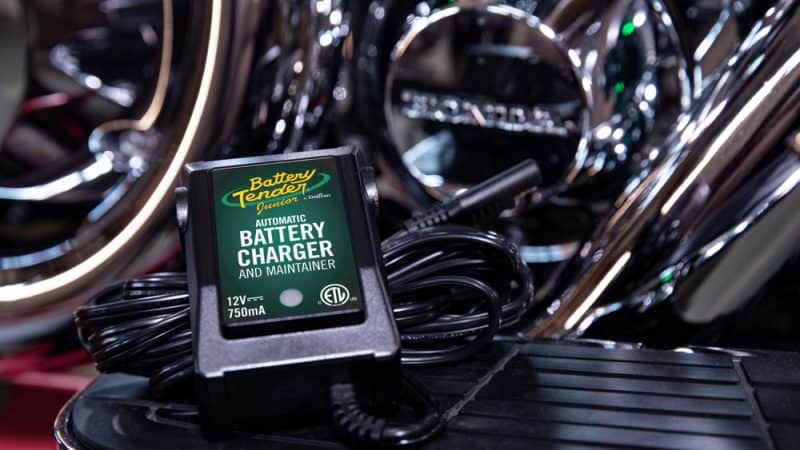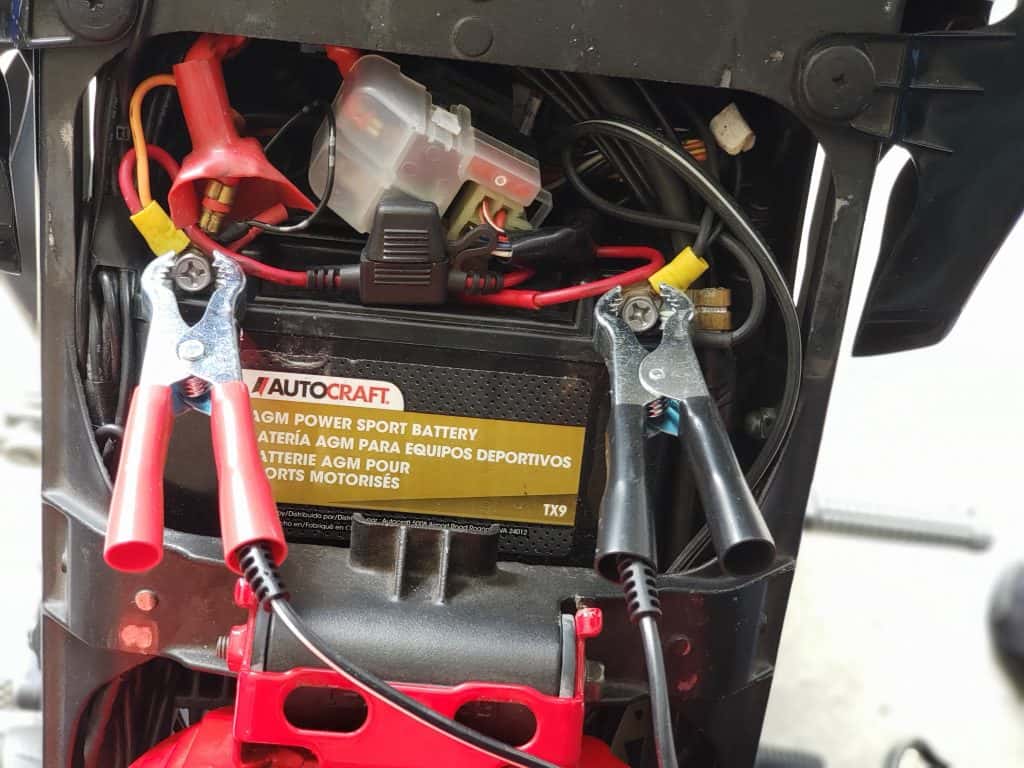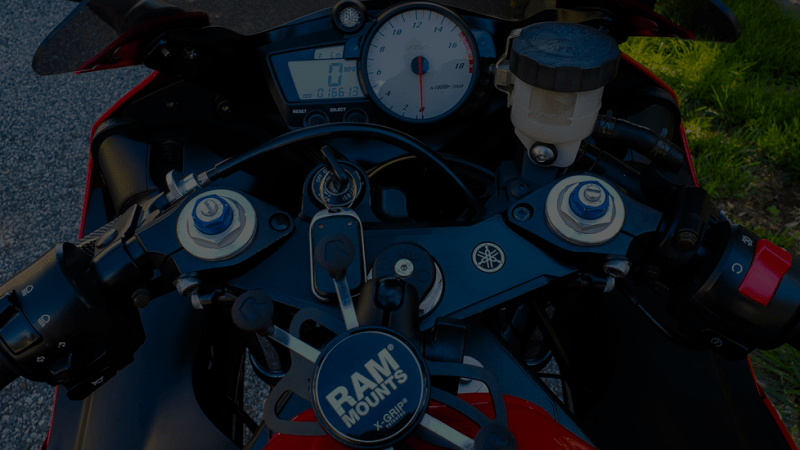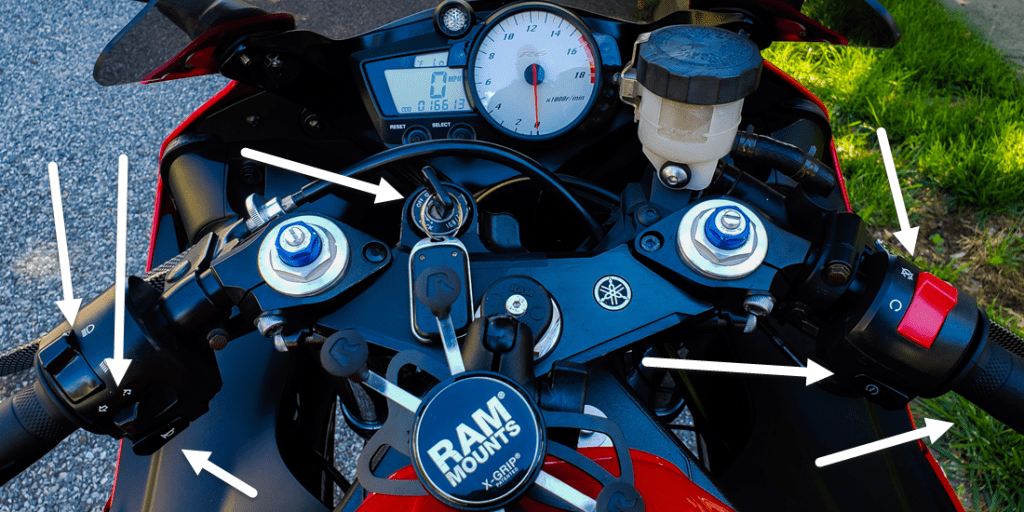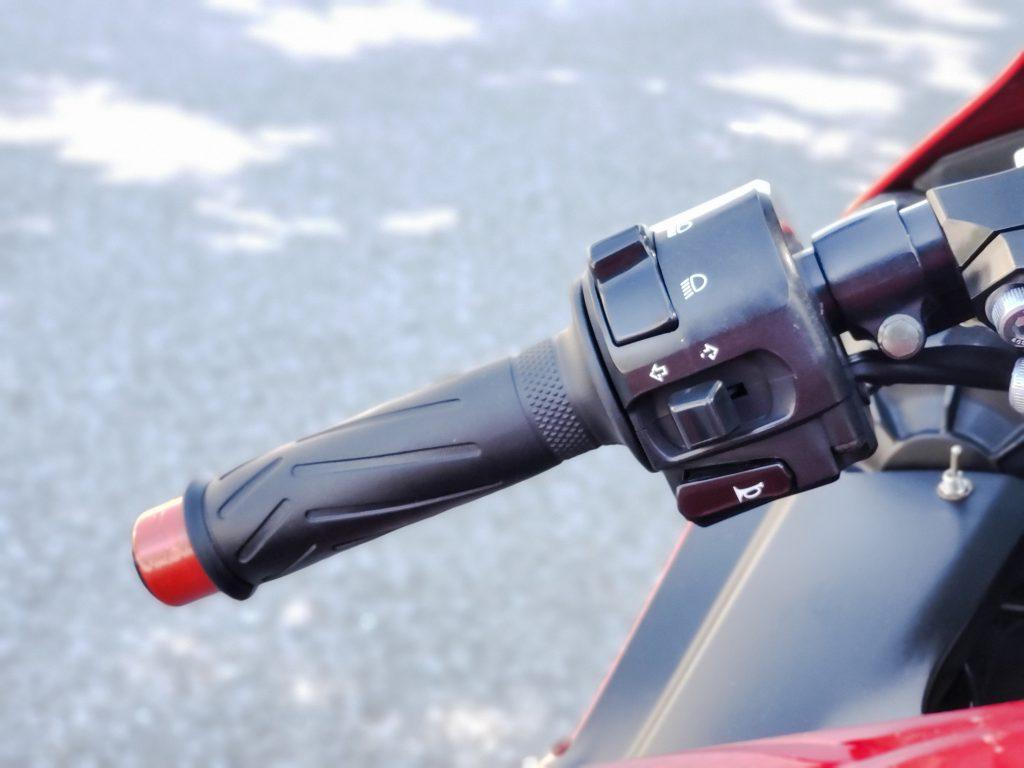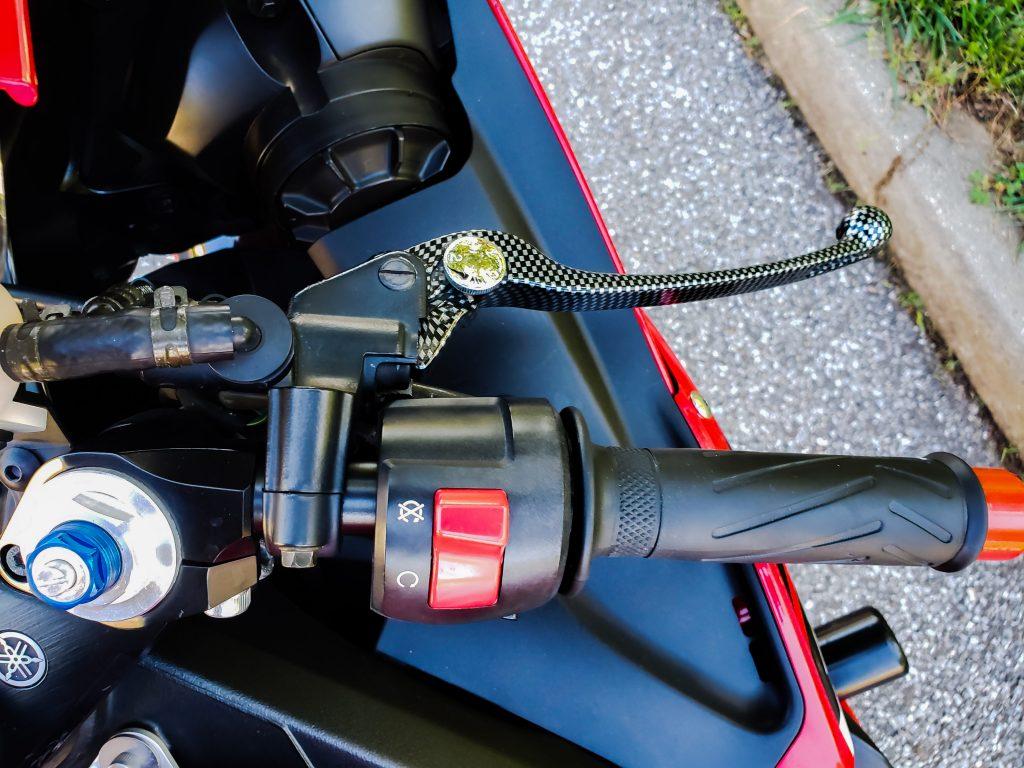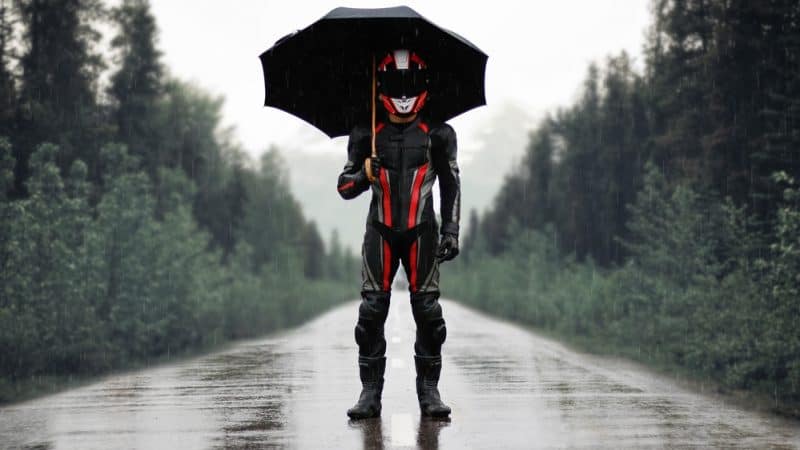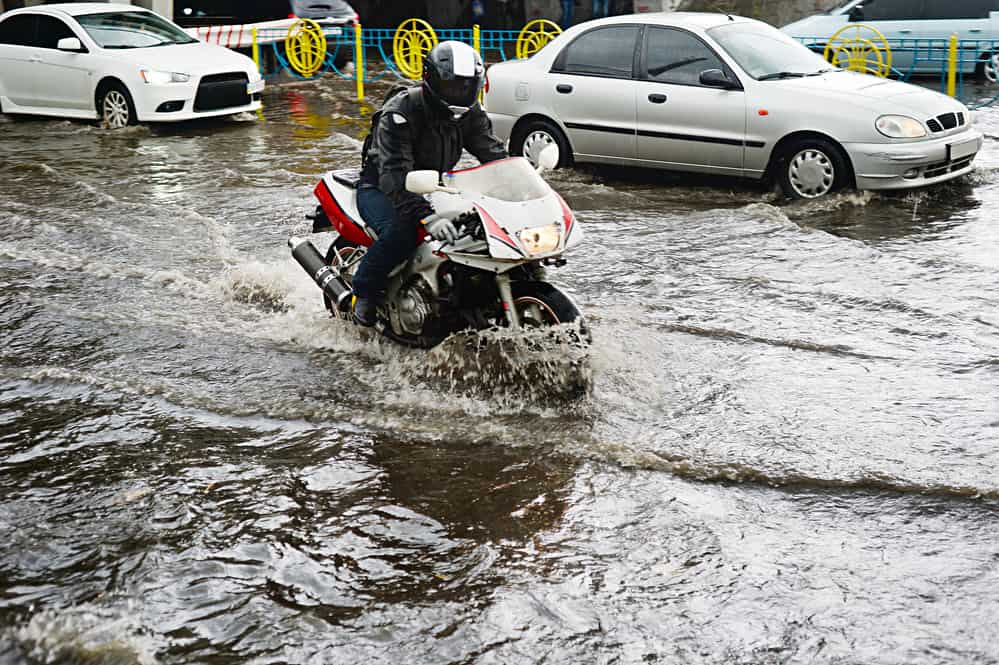Any serious motorcyclist will know the essentials, like wearing appropriate safety gear, proper riding position, turning mechanisms, and how to do a push start. Wait, you don’t know how to clutch start a motorcycle? What happens if you can’t start the motor with the switch? Good thing you’re here. In just a few steps, you can learn how to effectively push start a motorcycle and get riding in no time.
Before You Push Start
There are a few things to keep in mind if you plan on push starting (also called bump starting and clutch starting) your bike. First, push starting isn’t the ideal method, and it sometimes doesn’t work.
Next, if your motorcycle isn’t starting, check some things that sometimes prevent a motorcycle from starting:
- Ignition kill switch – make sure the kill switch is set to the STOP position.
- Fuel level – your fuel gauge could be faulty, so pop the cap and check to make sure you’re not running on E.
- Fuel petcock – if you have a non-EFI bike, make sure the fuel tap petcock is OFF.
- Kickstand – some bikes have an added safety feature that prevents it from starting if the kickstand is down.
- Gear set in neutral – if the gear is engaged, the bike will refuse to start. Do a double-check.
If none of these apply to your situation, then it’s time to push start your bike.
How To Push Start
Follow these steps in the order listed.
Find A Hill
While you could get a few friends to push your motorcycle, you’re not always going to be traveling in a group. When that happens, you need to find yourself a hill. Steep slopes help you get to the proper speed to bypass the start system.
On a flat road? Don’t despair. If you can push the bike at a reasonable speed then jump on and release the clutch, you can still do a push start.
Engage 2nd or 3rd Gear
A lesser known trick to a successful push start is to avoid 1st gear and go straight to 2nd or 3rd gear. Avoid 1st gear entirely if your bike as a high compression engine.
The reason why skipping 1st gear is important is because you could potentially lock the rear tire, which would result in a crash.
Clutch, Release, and Start
Start moving down the hill to get speed while holding the clutch. As you start to gain momentum, release the clutch and press the start button in a seamless motion. Quickly apply some throttle, and the motorcycle should start. As soon as the bike is roaring, engage the clutch.
It’s important to stay in full control of the motorcycle. Please do this as far from traffic as possible, just in case you end up swerving.
If this doesn’t work on the first try, don’t give up. Stop. Reset yourself, and repeat the first three steps again.
Rev That Engine
This is the final step—the most integral. If you don’t immediately rev the engine, the motorcycle will die again. Stay focused.
Depress the clutch slightly and moderately rev the engine. Don’t let it scream. Keep the revving slightly high so the motor doesn’t choke down. The worse case scenario if you don’t rev the motor is that the bike will die, and you don’t want that—especially since you’ll still be rolling down a hill.
Optionally, once you have the engine running, you can switch to neutral and apply the brakes while revving the engine. This will help you stay focused on keeping the engine from choking. This works best if the motorcycle is cold.
Get Riding
Once the engine has warmed up, do a quick ride to make sure everything is working as it should. Remember that your safety is the most important thing when push starting a motorcycle. Be sure to practice the push starting methods a few times before attempting it for real out on the road. You should be wearing protective gear and be away from traffic. If not, you could seriously hurt yourself and others.
That wraps up how to push start a motorcycle. Just follow the steps that have been outlined, commit to safety, and you will soon be push starting like the pros!
Enjoy reading this article? Get more motorcycle tips and tricks by subscribing to my YouTube channel.
You Might also like
-
How To Use A Battery Tender®
One of the most heartbreaking situations any car or motorcycle lover will experience is when you have beautiful riding or driving weather, are excited to hit the road, and the engine doesn’t turnover. The reason? Low battery power.
If you have a nifty gadget called a Battery Tender®, you can recharge the battery and bring it back to life in no time. A Battery Tender® is a friendlier alternative to traditional battery charges because of the technology housed within the device that is designed to prolong battery life.
Before you decide to buy a Battery Tender®/Maintainer, though, let’s talk about what they are, what battery maintainters do, and why you should have a maintenance charger for your motorcycle.
No products found.No products found.
What Is A Battery Tender®?
Also known as “float chargers” or “maintenance chargers,” Battery Tender® were first created by the U.S. company Deltran in 1965. What separates battery tenders from plain ol’ chargers is that these devices provide a constant voltage supply but also are controlled by processors. In other words, they are able to refrain from charging faulty batteries, use spark-free technology, and have green and red indicators that help you understand what’s happening in just a glimpse.
A Battery Tender® is the opposite of a trickle charger, an unsophisticated, less expensive option. Though the purpose is similar, a trickle charger doesn’t have microprocessor technology that prevents it from damaging the battery if you leave it charging for an extended period of time. Furthermore, you can use a battery tender when you plan on storing your motorcycle for several weeks on end, like over winter.
Keep in mind that a Battery Tender® is not able to jump-start a long-dead battery. When this happens, you need a trickle charger.
For this reason, you can think of a Battery Tender® as a trickle charge with a brain—the exact words of the original manufacturer, Deltran. Of course, there is more than one brand of Battery Tender® available on the market.
For example, the DieHard Battery Charger/Maintainer is similar to a Battery Tender that employs things like Float Mode Monitoring to charge more than just motorcycles. Whichever model you choose, just make sure they have features like auto-adjust amperage to help maintain the charge, easy-to-read indicator lights, and float mode monitoring.
No products found.No products found.
Using A Battery Tender®
Operating a Battery Tender® is easy. To use a one of these devices, you just plug it into any standard AC outlet and use it to transfer power to the 12-volt battery in your motorcycle.
When preparing to use the battery tender, keep the AC and DC cords away from the vehicle. Keep the charger off until you have everything plugged in.
Depending on the motorcycle, the connections might differ, so refer to your owner manual. Once you have the battery tender connected to the correct posts on the battery, you can switch it on.
You should see indicator lights turn on, such as:
• Flashing red light – AC power and microprocessor is functioning properly. However, if the flashing continues, the voltage might be too low. Take a look to make sure the alligator clips are attached properly.
• Steady red light – The clamps are properly place and power is being transferred to your battery. The light will remain red until the battery is fully charged.
• Flashing green light – A flashing green light is often paired with a red light. This means the battery is about 80% charged and can be used.
• Steady green light – The charge is complete. You can keep the battery tender attached to the battery to help maintain the life of the battery if it will be sitting for an extended period of time.Quick note: If your battery has less than 3 volts, the battery tender won’t start. The battery should produce at least 3 volts. On the same note, if you have a standard 12 volt battery that is defunct and is producing less than 9 volts, the battery tender won’t work properly.
No products found.
Takeaway
Trickle chargers bring dead batteries back to life while battery tenders prevent batteries from losing power during periods of inactivity. Whether you use your bike every other day or less frequently, a battery tender will preserve the life of the battery to ensure your motorcycle is ready to ride whenever you need to hit the road. The straightforward usage makes it a wonderful investment for every motorcycle enthusiast.
Now that you’ve done you’re reading, it’s time to check out the motorcycle videos on my YouTube channel. Don’t forget to subscribe and receive notifications so you never miss an update!
No products found.
No products found.
-
Motorcycle Basics: Before You Start Riding
Before even hopping on a motorcycle, it’s a smart decision to ride about the mechanics of the machine and familiarize yourself with key concepts. Having an idea in your head is going to come in handy when you’re faced with common beginner problems or later on when you’re on the road.
That’s how you really get a handle on the motorcycle. Let’s get started.Motorcycle Basic Controls
Most motorcycles have the same controls; but you should always check the owner’s manual since the locations and shapes of some features will vary between makes and models.
motorcycle controls indicators and equipment Motorcycle basic parts:
Handlebars
Right side:
- Electric start button – usually yellow or white.
- Engine cut-off switch – above the electric start button. Usually red.
- Above the right throttle is the front brake lever.
Left side:
- Horn
- Indicators (blinkers)
- Choke
- Headlight dip switch (high beams/low)
- Clutch lever.
Between the handlebars, you find the ignition key. Ahead of the handlebars, you will also see the speedometer, odometer, and the tachometer.
motorcycle handlebar controls motorcycle throttle Older Styles and Off-Road Bikes
Here’s some special considerations if you are on an older model or have an off-road bike:
Fuel petcock – these are usually attached to the left near the carburetor. You can lean down to switch the gas tank when the fuel is getting low and you need to get to the gas station ASAP.Kick starter – off-road bikes have kick starters more commonly than street bikes. The kick starter works when you push down on the lever, turning the engine crank and causing the pistons to put pressure against the spark plug. Fuel ignites to start the engine.
What To Check Before Your Ride Every Time
Professional schools throughout the country use the acronym T-CLOCs to help you remember what you should check before heading on your bike. These checks should be done at least once a year, depending on how often you are riding your bike. If you ride every single day, you will have to use T-CLOCs much more often.
- T – Tires
- C – (Main) Controls
- L – Lights & other controls
- O – Oil & other fluids
- C – Chassis
- S – Stands
Tires
Check the air pressure and look at the condition of the tires. Are they worn down? Cracking? What is the condition of the spokes? Do you note any air leakage?
Next, look at the rims, bearings, seals, and casts. Does each brake work as it should? Does the bike fight you when turning or slowing down?
Controls
The main controls include the handlebars, cables, hoses, levels, pedals, and throttle. Make sure the condition of the hoses is good and that everything is properly lubricated. The bars should be straight, and the throttle should move without resistance. Ensure the hoses aren’t cut or leaking. Any bulges, chafing, cracks or fraying of control cables needs to be repaired.
Lights & Other Controls
This includes the battery, wiring, tail and signal lights, switches, blinkers, headlight, and reflectors. Is everything illuminating? Do the blinkers flash right? Is fraying or kinks in the wiring? Are the beams strong enough in the dark?
Oil & Other Fluids
Check the gaskets and seals for any leaks. Ensure the oil level is good, along with other fluid levels. Check for sediment in the coolant reservoir.
Chassis
The chassis is made up of the frame, suspension, chains, belts, and fasteners. Nothing should rattle. Nothing should be frayed, cracking, peeling, or chipping. Ensure that everything is tight and that there is tension in the belts and chains.
Stands
Check for cracks or bends in the stands. Springs should hold their position without looseness.
Basic Mechanics of a Motorcycle
Being that a motorcycle rides on two wheels, it is designed to lean to either side. Through balance and input from the ride, the motorcycle maintains an upright position. Many beginners are afraid that the bike is going to fall over if they lean too far, but that’s not the case. Through the forces of physics, such as friction, momentum, and gravity, it’s nearly impossible for a bike that’s going to straight to fall over.
Engine
Another reason the motorcycle stays upright is the force of the pistons in the engine. These pistons move up and down, creating a force that helps the moving bike maintain it’s upward position.
Tires
The tires of motorcycles are designed to be rounded, ensuring that as the bike rounds a corner, the same surface area of the tire remains on the ground.
Chassis
For the beginner, all you need to know about the chassis is how to sit properly. When positioned properly on the bike, your wrists, knees, and back will be comfortable. You should also be able to engage your core and thigh muscles when using your body to maneuver.
Clutch
Most bikes are manual transmission. The clutch keeps the bike moving but also controls the speed by using friction. Clutches are usually bathed in the same oiled the engine uses, so if you ride the clutch for a while, you won’t cause damage. However, some bikes are different, so refer to the owner’s manual.
Wrapping It Up
For the new rider, your focus should be memorizing where the controls are and what certain parts of the bike do. By learning the general location, you can drive much more safely (and not while staring at the handlebars).
Remember, the everything takes practice. In the same way you learned to ride a bicycle, you need some patience with riding a motorcycle. With that, you’re ready to begin!
Liked this article? Want more beginner’s tips? Subscribe to my YouTube channel to get notifications about the latest videos and never miss out.
-
How to Ride a Motorcycle in the Rain
Be it a shower or deluge, rain can be your worst nightmare when on a motorcycle if you’re not properly prepared. During the spring and winter months, precipitation is unpredictable, and if you are in a rainy state, expect to get caught at least one shower while riding your bike. Rather than avoiding rainy days altogether, learn to ride your motorcycle in the rain.
Before The Ride
For maximum safety, inspect your bike to make sure it’s ready to tackle a ride in the rain.
• Fluids: Check your motorcycle to make sure there’s no brake fluid or oil leakage. While oil leaks aren’t very dangerous in dry conditions, when oil mixes with water, the road becomes a slick and dangerous course.
• Brakes: Make sure the brake pads have enough material left to help you with prompt stops in wet conditions.
• Tires: Check that your tires have enough tread to push water away and grip the road. You also want to ensure they have enough air pressure. Under or over-inflated tires react differently in water, but both are potentially dangerous.Weatherproof Gear
In order to keep you and your bike safe, you should have the correct riding gear and attire ready to go. You can choose between water-resistant and waterproof items. Water-resistant will shed water, but after a period of time, water will begin to permeate the material. Waterproof, on the other hand, will never allow for water to absorb into the material, unless you get completely submerged in water.
• Water-resistant or Waterproof Gear: Jackets and one piece suits should be zipped up tightly when riding in the rain to prevent water from seeping. Zippers should have a flap that covers the edges to protect the interstices. Cuffs on the jacket or coat need to be long enough to reach your gloves.
• Riding Boots and Gloves: More effective deterrents against complete saturation of your clothes. Both boots and gloves need to be tight enough to prevent water from dripping through. No one likes cold, wet socks.
• Helmets and Goggles: For the best protection, get a full-faced helmet. If you have a ½ or ¾ face helmet, get a pair of goggles. Pair the goggles with a waterproof balaclava that can shed water away from your face.
• Miscellaneous: If you have a saddlebag or storage unit, consider keeping a change of dry clothes with you. Also, keep plastic bags with you to keep valuables dry if you happen to get caught in a sudden rainstorm. Dry bags or waterproof backpacks can also help.Be Cautious Of Road Conditions
Wet roads are dangerous for motorcyclists and other vehicle drivers, regardless of how prepared you may be. Even when the roads appear clean, they could be slick from oil. Here are some things to consider when traveling by motorcycle in the rain:
Less Traction
The first hour of rainfall is the most dangerous, because oils absorbed into the asphalt rise to the surface. During this time, it’s best to pullover at a rest stop about wait for about an hour. Once the rain has washed the road of oil and debris, you can head out again. Remember that this also means an increased braking distance.
Less Visibility
Sometimes, the fog or mist is too dense, or the rain is falling so hard you or other drivers can’t see. You can make yourself more visible to the traffic around you by wearing high visibility clothing and reflective patches.
Hydroplaning Risk
Hydroplaning occurs when water prevents the tire from making contact with the road. Reduce the risk of hydroplaning by avoiding painted lines, manhole covers, iridescent patches on the road and puddles (oil), tar snakes, metal crossing, and other places with reduced traction.
Also, you should reduce your speed when approaching puddles you can’t maneuver around. Start slowing down, squeeze the clutch, then coast through the puddle. If you’re going too fast, it’s better to maintain that velocity rather than slowing down abruptly, as this will reduce friction could cause fishtailing.
Decrease the risk of hydroplaning further with all-weather tires.Nature’s Wrath
Stay aware of lightning, hail, ice, sleet, and other conditions that could transpire in a rainstorm. High winds can cause debris to fall into the road, and you might not see it due to decreased visibility. If it starts lightning, pull over.
Conclusion
Not every day is going to be perfect riding weather. Planning ahead and being prepared goes a long way when dealing with rainy conditions. Not only will you stay dry, but you will arrive at your destination safely.
Want more riding tips? Head over to my YouTube channel. Subscribe to receive notifications and never miss an update.

